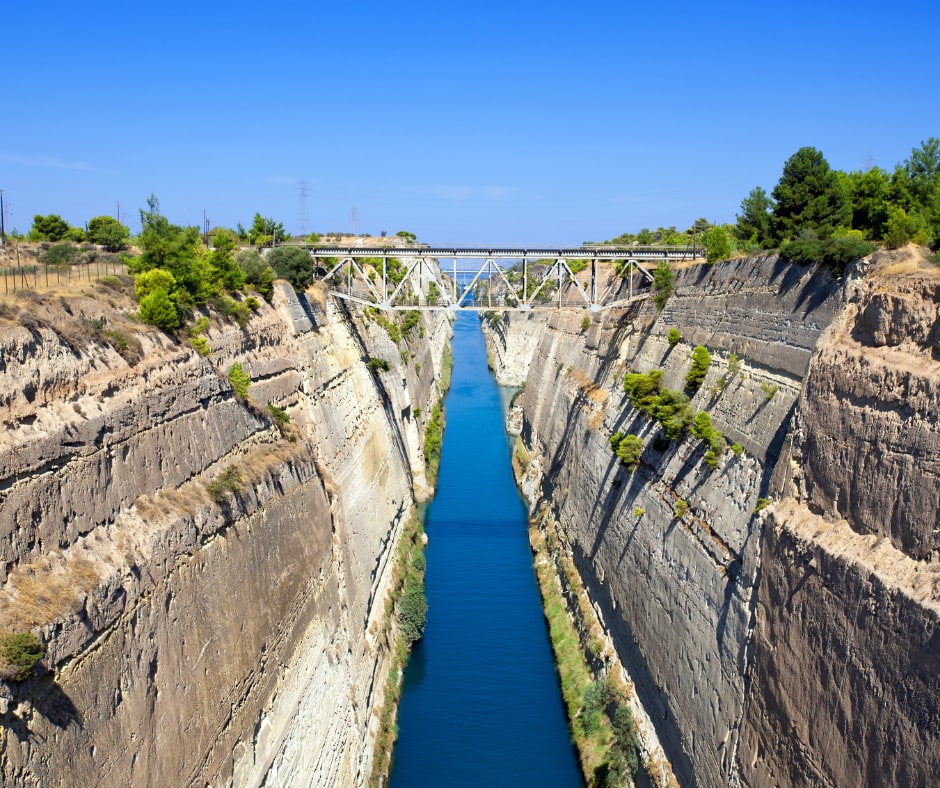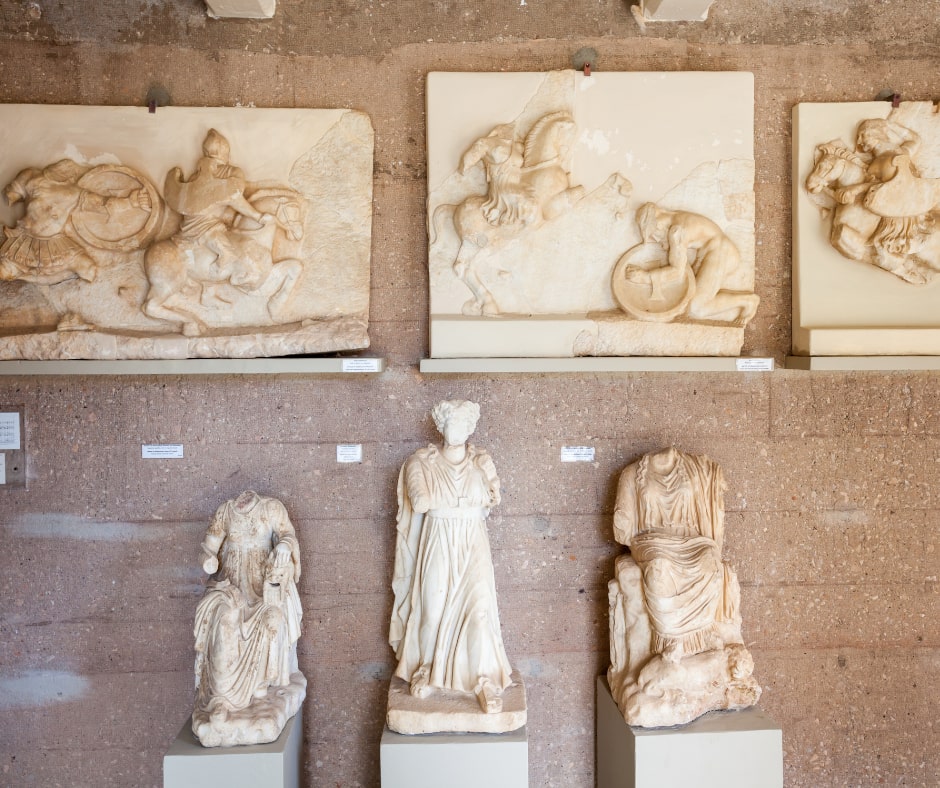Top Visits
- Corinth Canal
- Archaeological Museum of Ancient Corinth
- Temple of Apollo
- Glauke Fountain
- Peirene Fountain
- Sanctuary of Asklepieion
- Roman Odeion
- Bema of Saint Paul
- Sanctuary of Demeter and Kore
- Castle of Acrocorinth
The Isthmus of Corinth has been split by an artificial canal, which connects the Gulf of Corinth with the Saronic Gulf in the Aegean Sea and separates the Peloponnese from the rest of mainland Greece. Bridges crossing it provide passage for cars and trains. It is about 6.5 kilometers (4 mi) in length and less than 25 meters (70 ft.) wide at its base, so it cannot be crossed by many large modern ships.
Ancient Corinth was one of the largest and most important cities and city-states in Greece, with a population numbering nearly 90,000 in 400 BC. It is also of importance to Christian tradition, as Corinth is connected to Saint Paul through his two letters to the Corinthian Christians included in the New Testament.
Acrocorinth, on top of a nearby mountain, was the acropolis of ancient Corinth in antiquity and later a fortified site built upon and expanded by Venetians, Turks and Greeks alike through the centuries. The castle fortress is Peloponnese’s oldest and largest.










